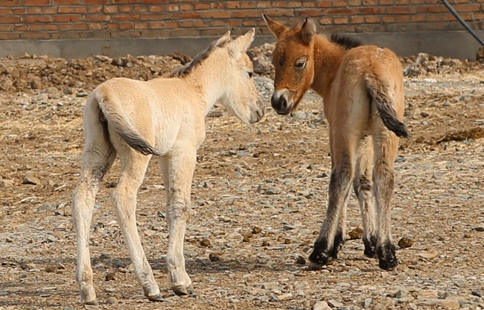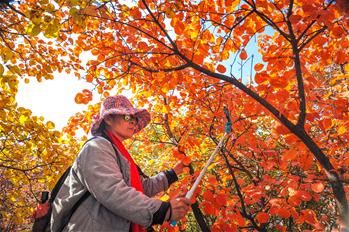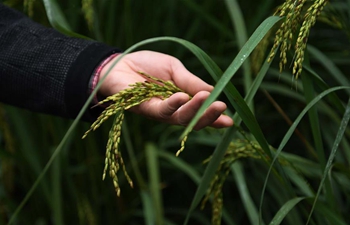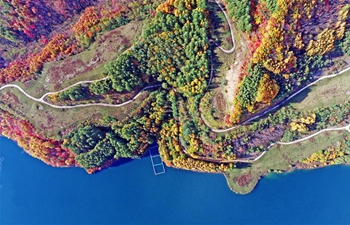SAN FRANCISCO, Oct. 20 (Xinhua) -- A sharp increase this year in the number of oaks, manzanita and native plants infected by a tree-killing disease may have helped spread massive wildfires that raged Northern California, which killed 42 people, said a study of the University of California (UC) Berkeley released Friday.
The latest study, released by the UC Berkeley Forest Pathology and Mycology Laboratory, found 37 percent of the trees sampled in fire-ravaged eastern Sonoma County - prior to the fires - were infected by Sudden Oak Death (SOD), an exotic tree-killing disease caused by a microscopic pathogen.
The number of trees infected by SOD this year is about 10 times more than two years ago, Matteo Garbelotto, director of the UC Berkeley Forest Pathology and Mycology Laboratory said.
The fungus-like virulent pathogen, which thrives in the aftermath of heavy rains, has infected 13 percent of trees along the California coast, according to samplings this year from 15,000 trees. It kills big oak trees and the smaller understory tan oaks.
Dead and dying oak trees make wildfires hotter and cause them to spread more quickly, Garbelotto, adding that it is the worst outbreak of the disease he has ever seen since he initiated a testing program in 2007.
Californian fire authorities are still investigating the exact cause of the worst wildfires in the state's history, which broke out on Oct. 8 and, in addition to the fatalities, forced 100,000 people to evacuate and destroyed more than 7,700 structures, an estimate announced by the Californian Department of Forestry and Fire Protection Friday.
Neither fire officials nor Garbelotto know how much of an impact SOD had on the fires, but dead oak burns well and keeps burning a long time.
Garbelotto's laboratory published a map this week pinpointing infestations, often in urban settings, which showed that the number of trees infected statewide has doubled compared to a year ago and tripled since 2015.
The SOD oak killer, which was estimated to have been introduced into California 20-25 years ago from unknown region of the world, has spread rapidly in forests and wildlands along the California coast and in southern Oregon, Garbelotto's laboratory said.
"California is more susceptible to larger and hotter fires, specifically because of the large number of dying oaks, which are basically match sticks," he said.
"We have these large swaths of forest with a large number of infected oaks and tanoaks. Even when they are not dead, their moisture content is much lower than a healthy tree," explained the forest ecologist.

















